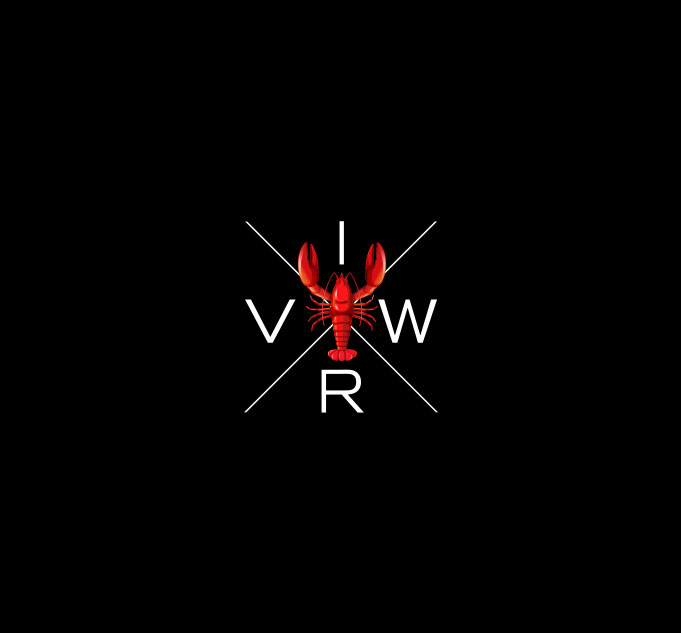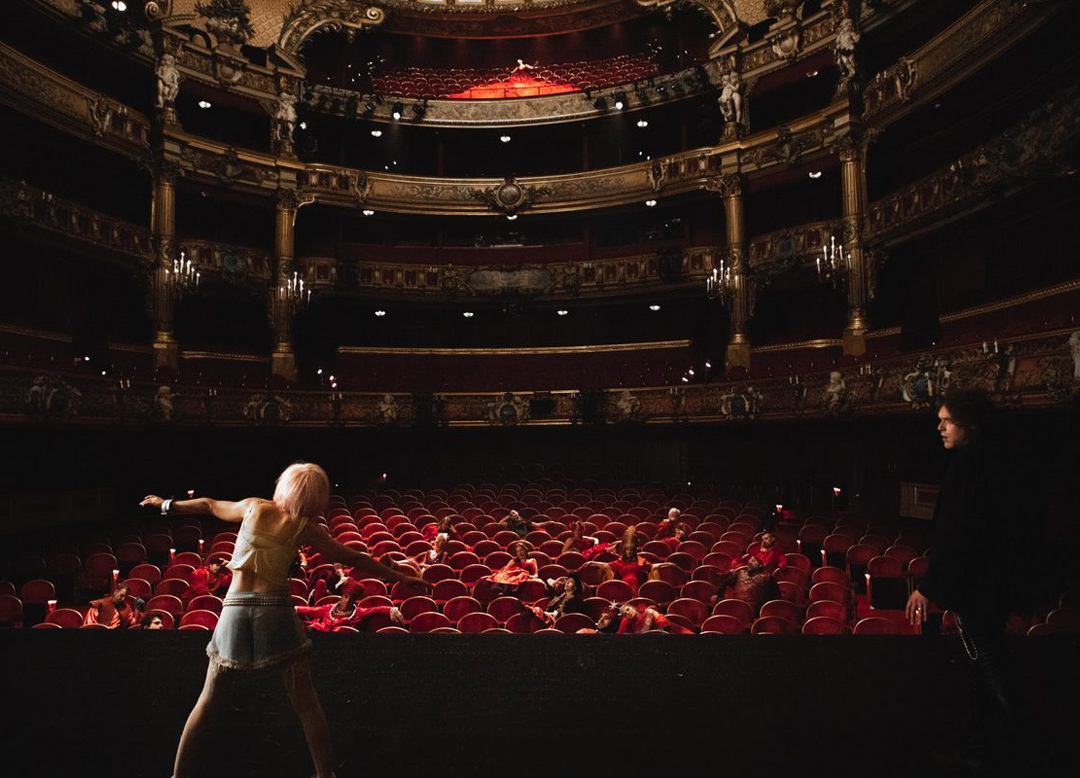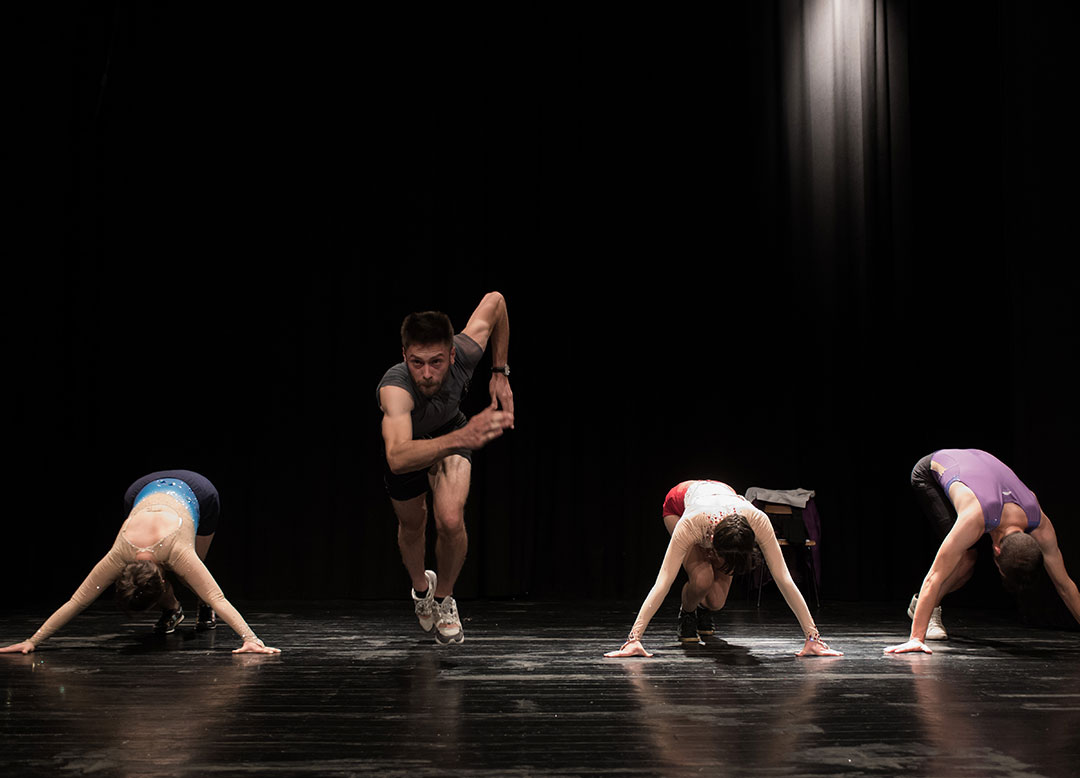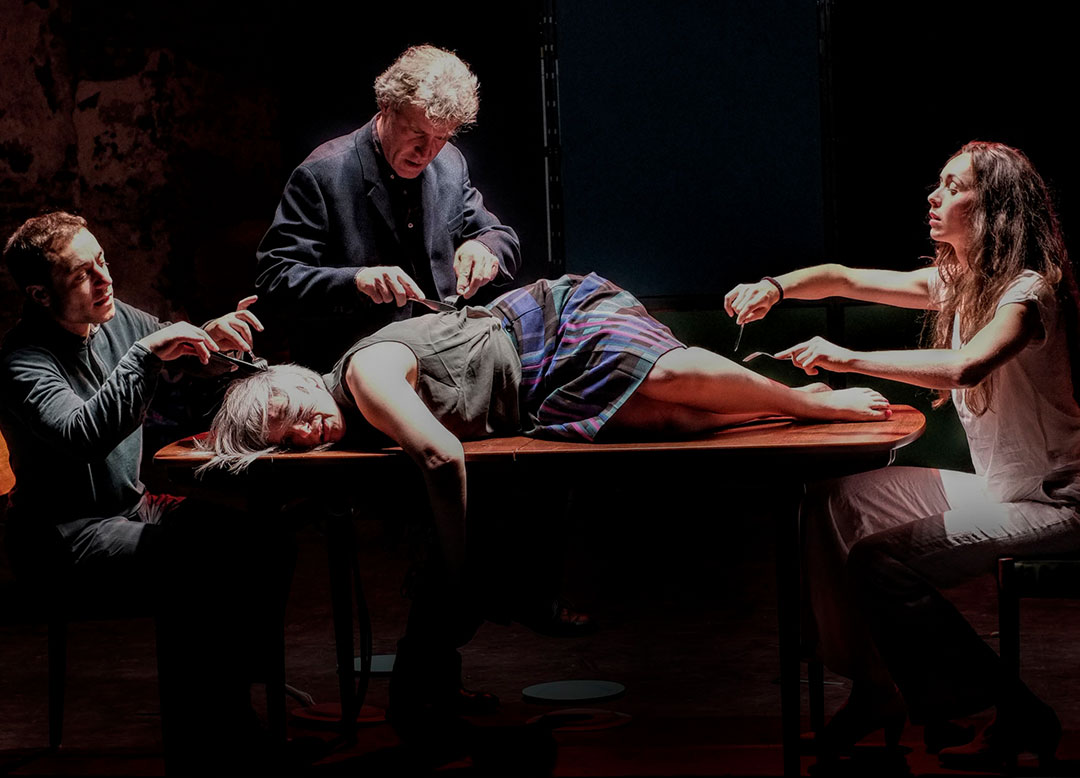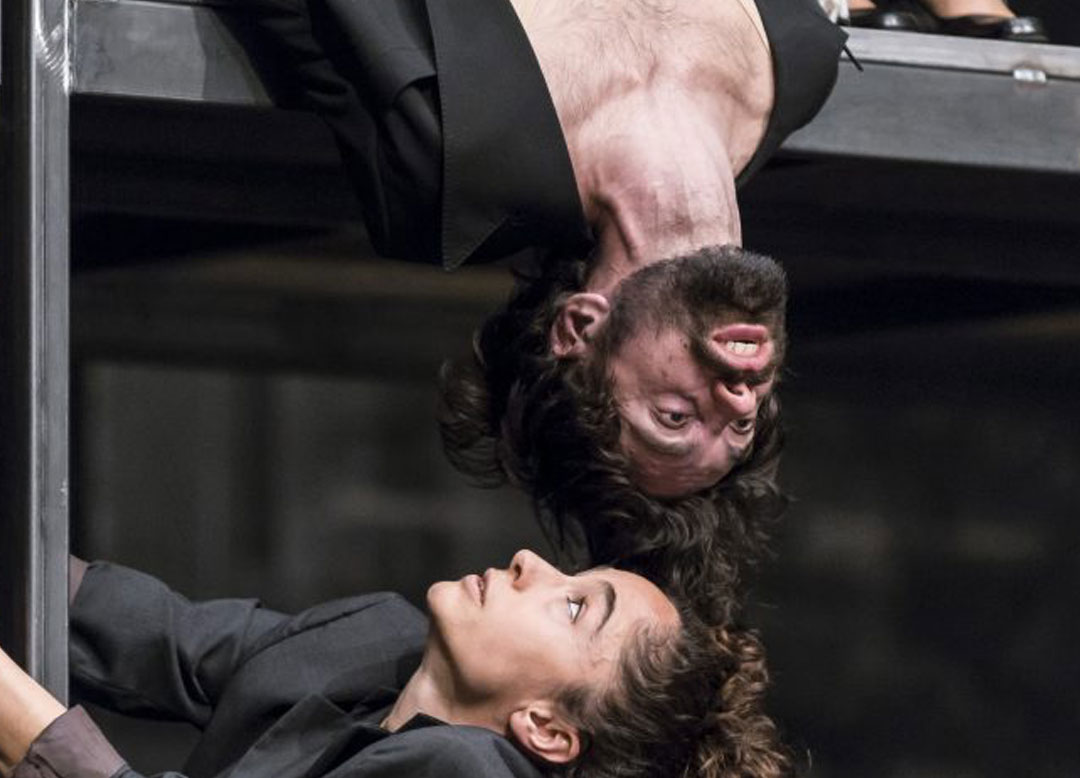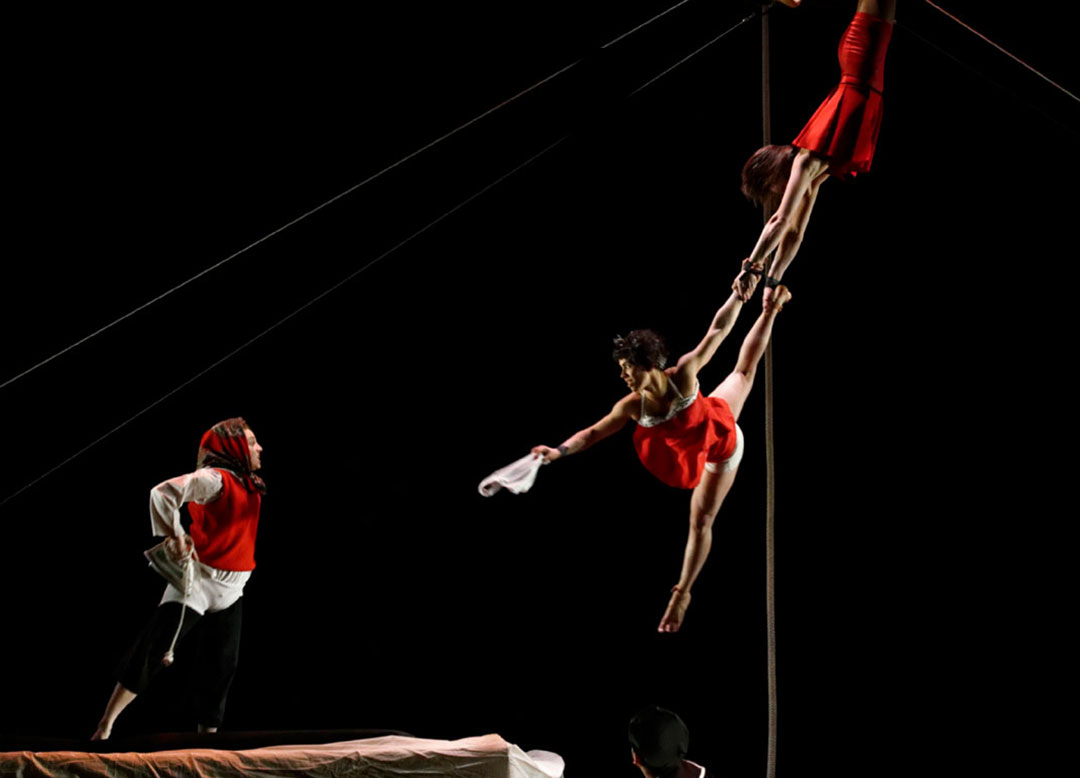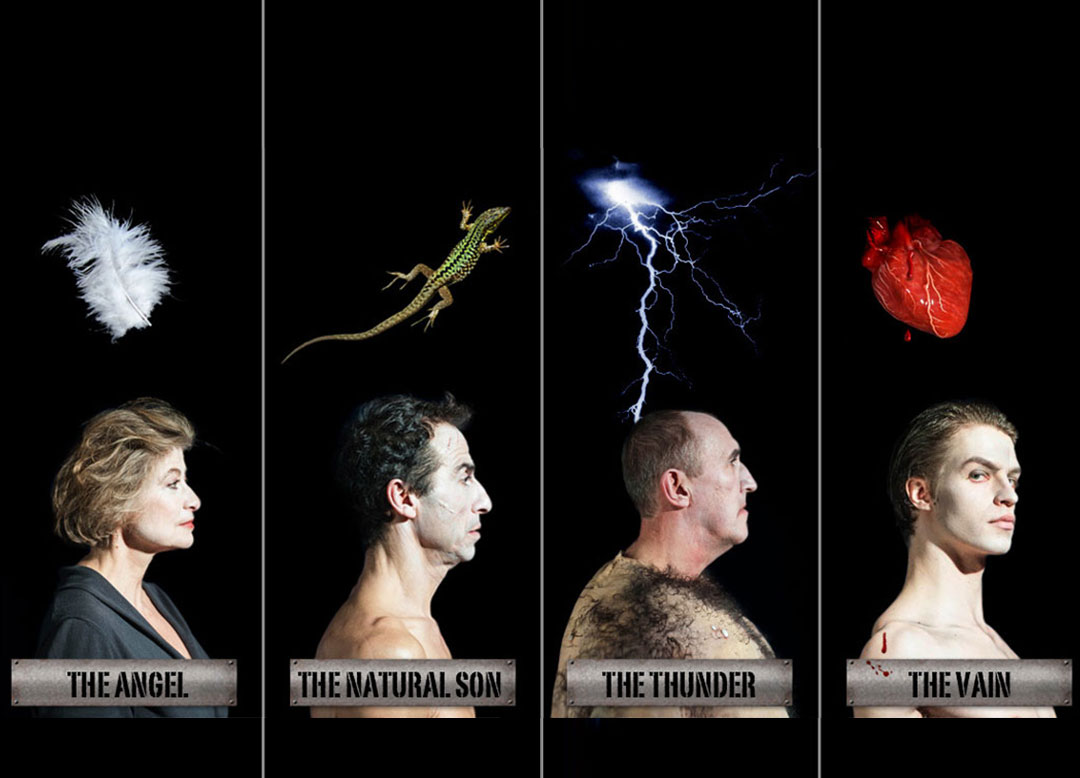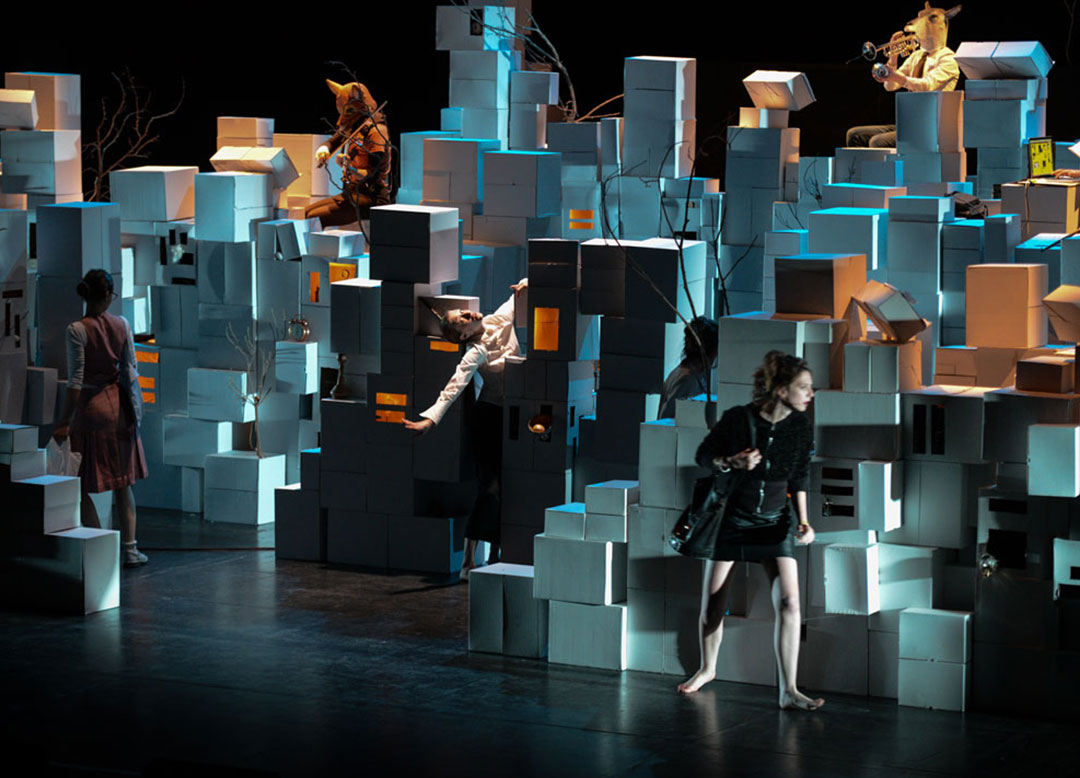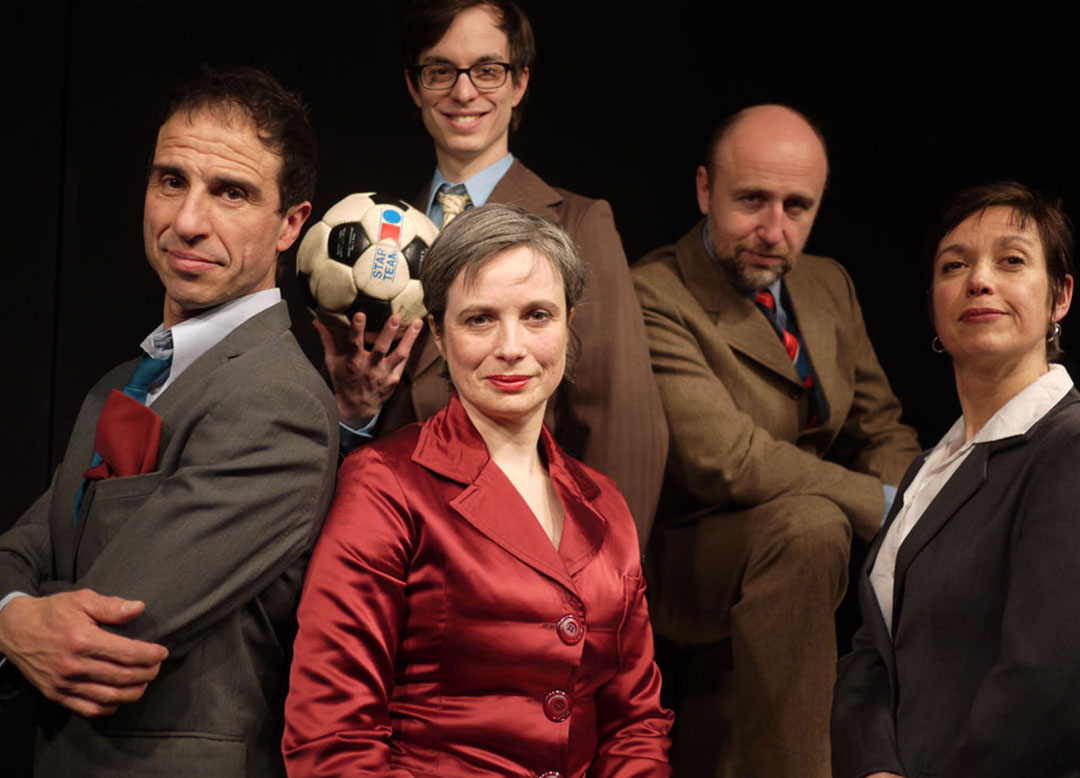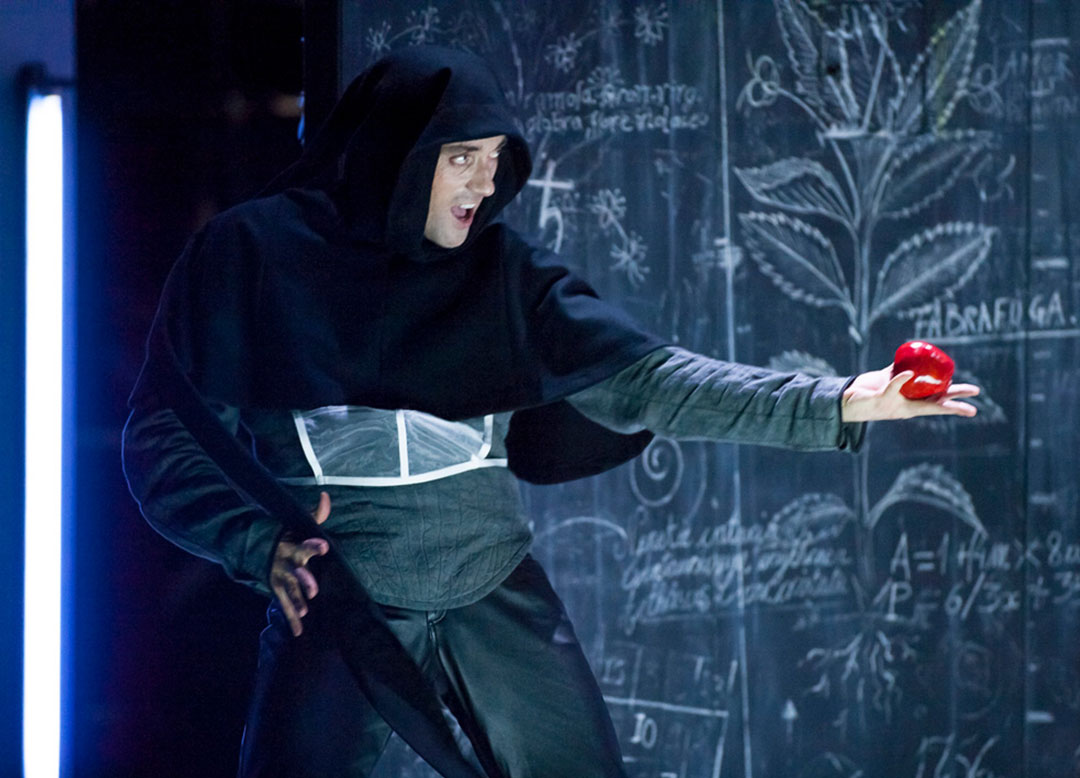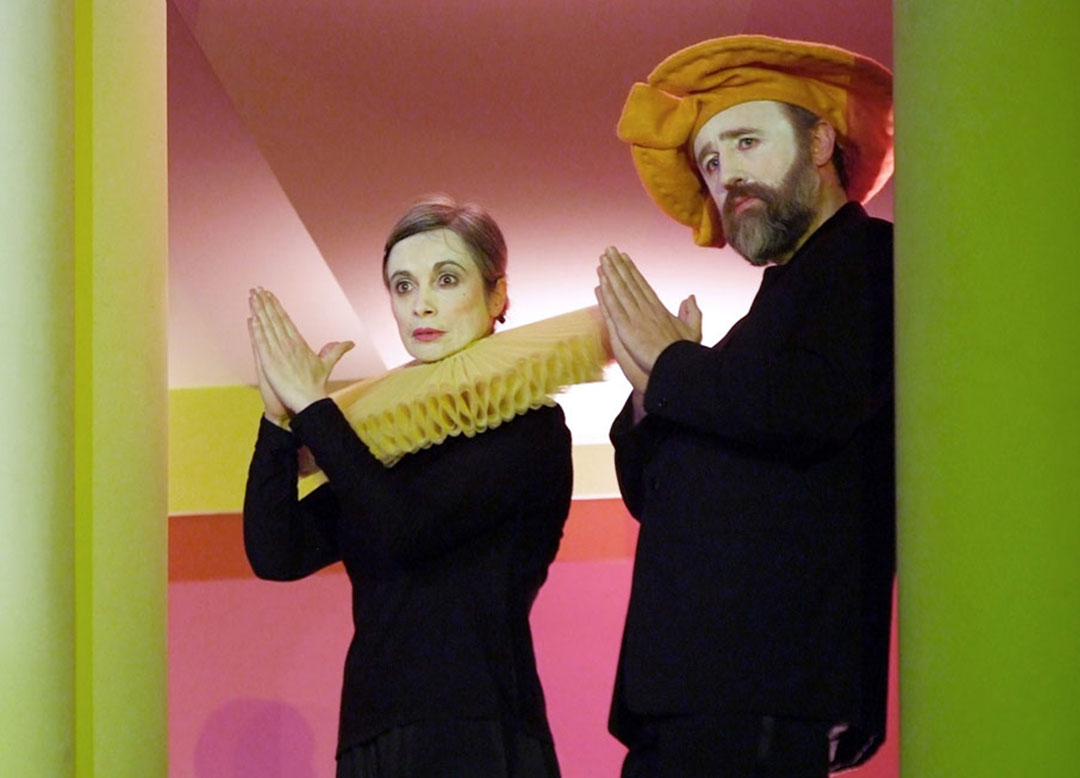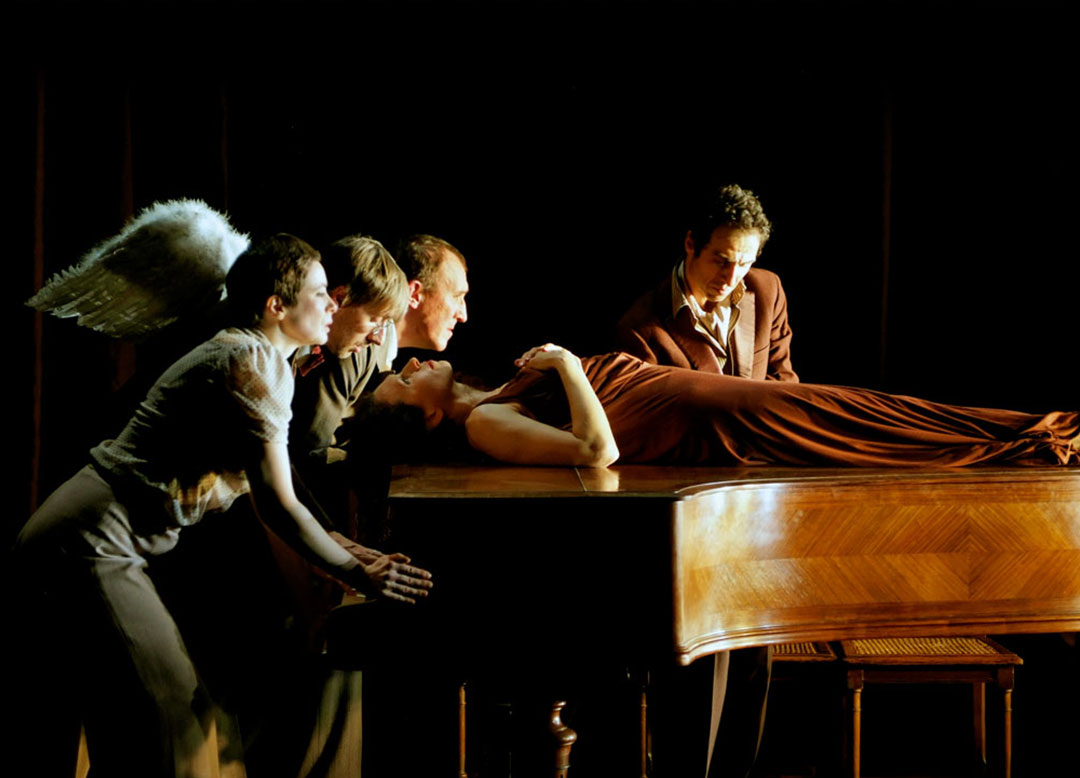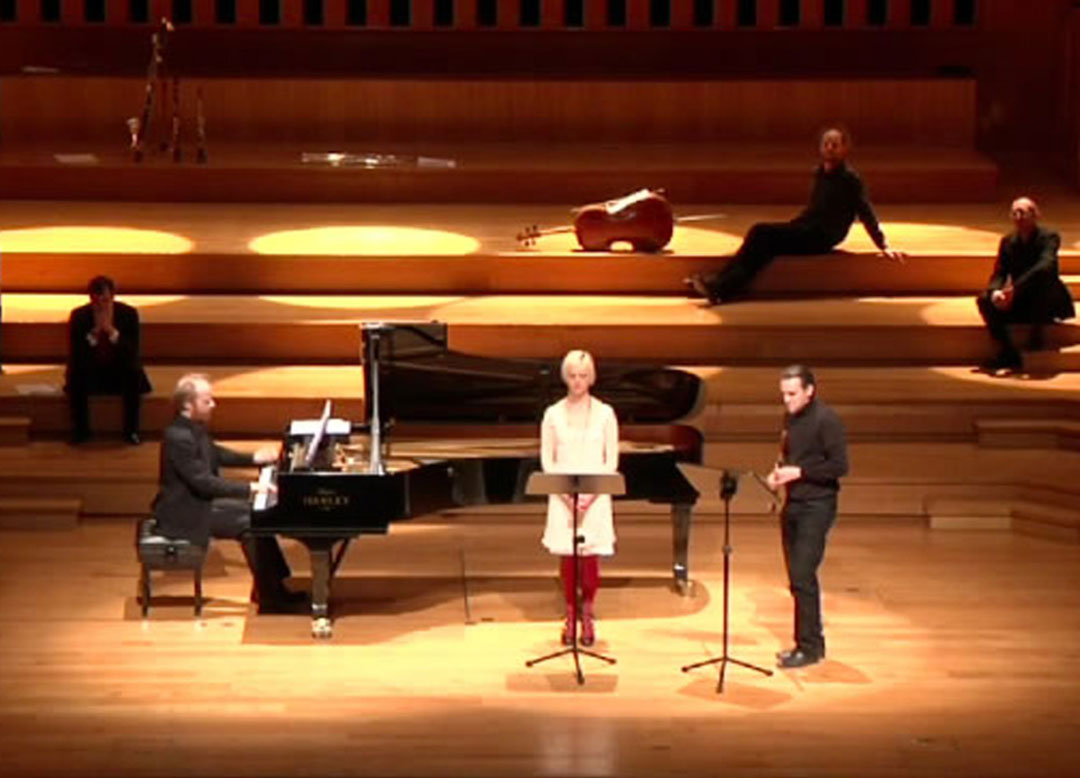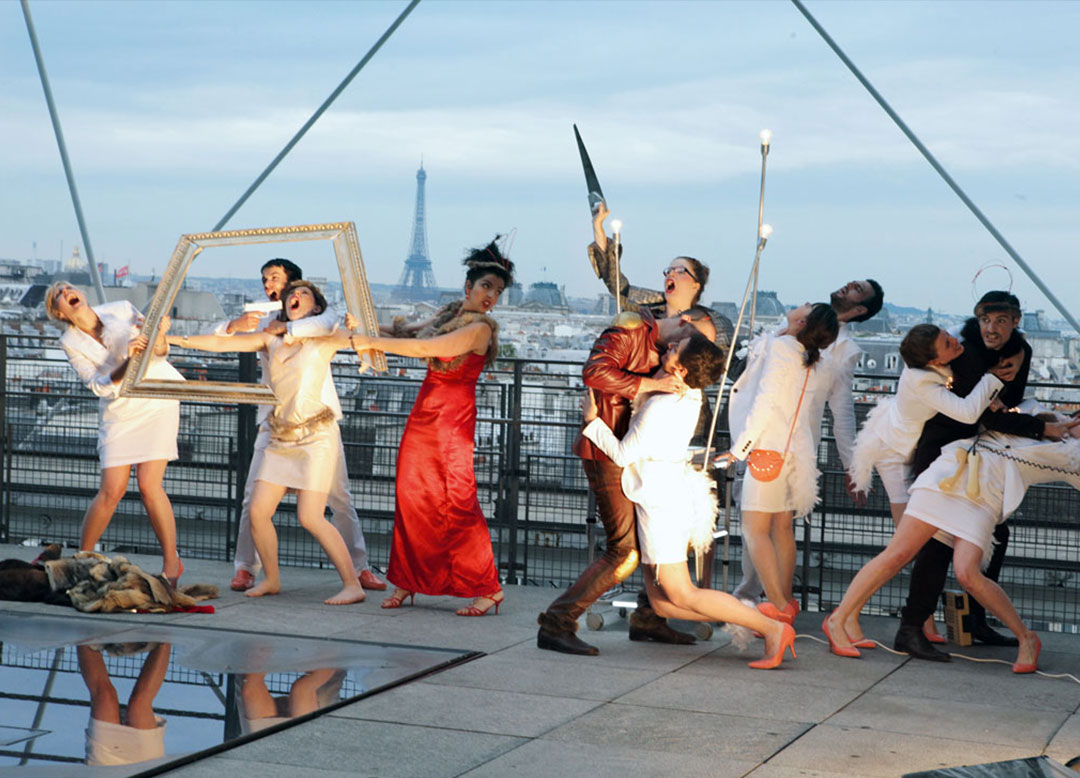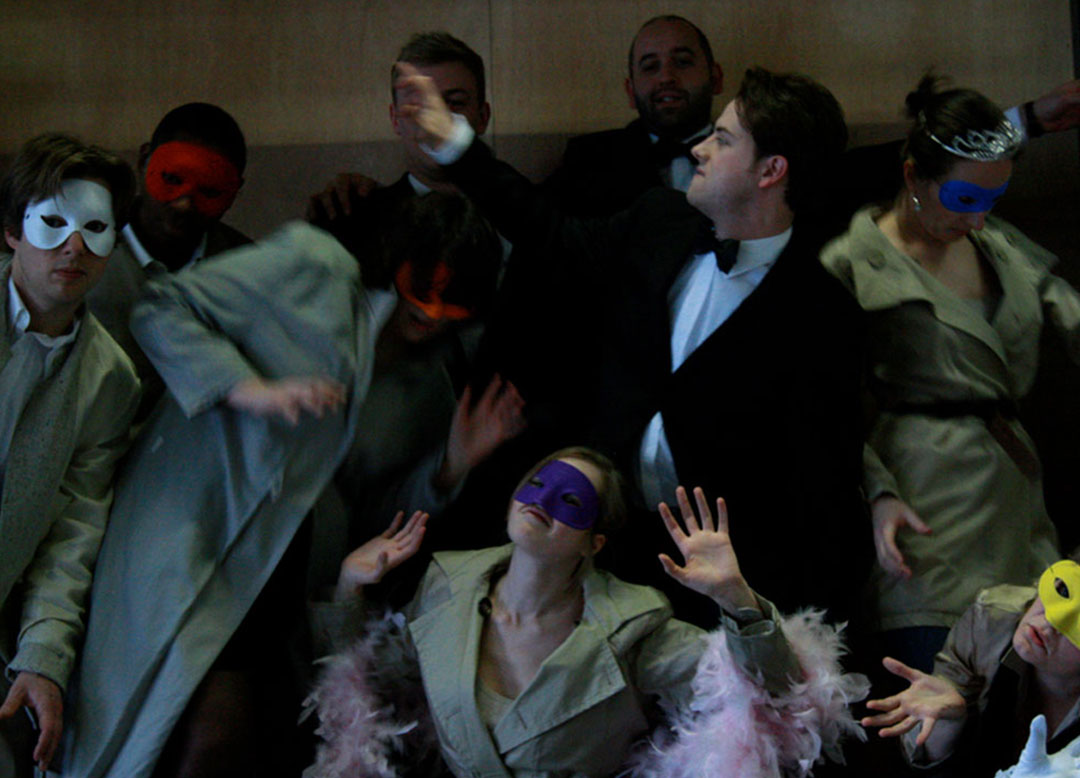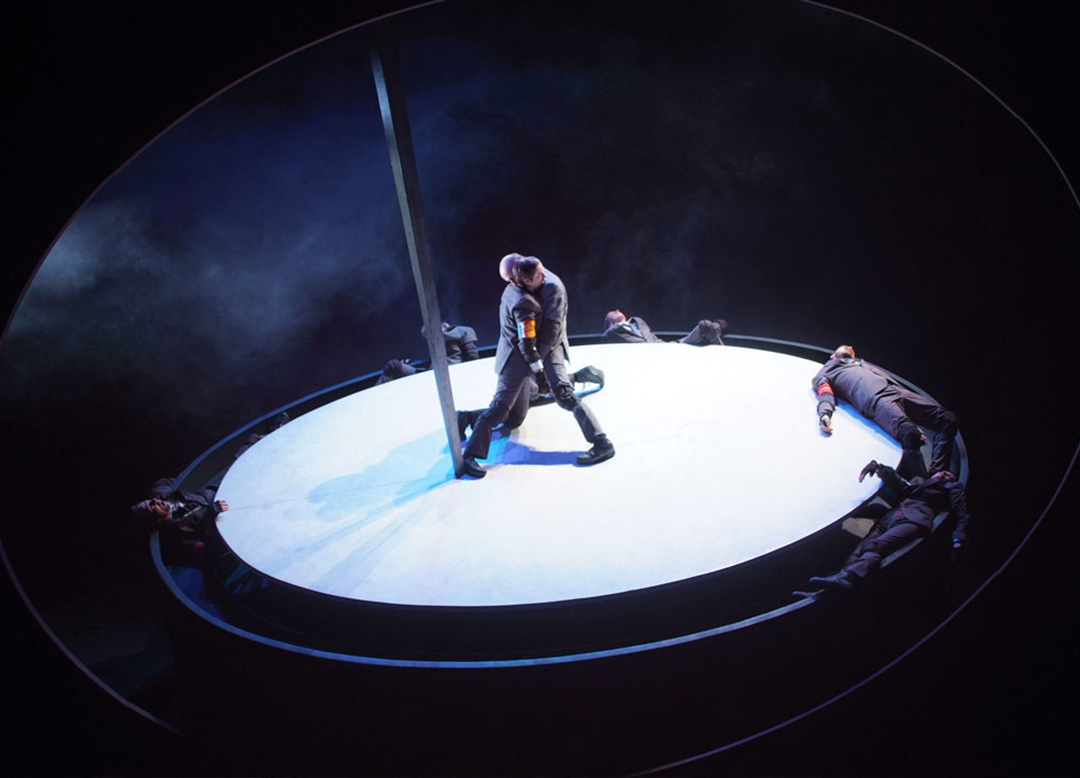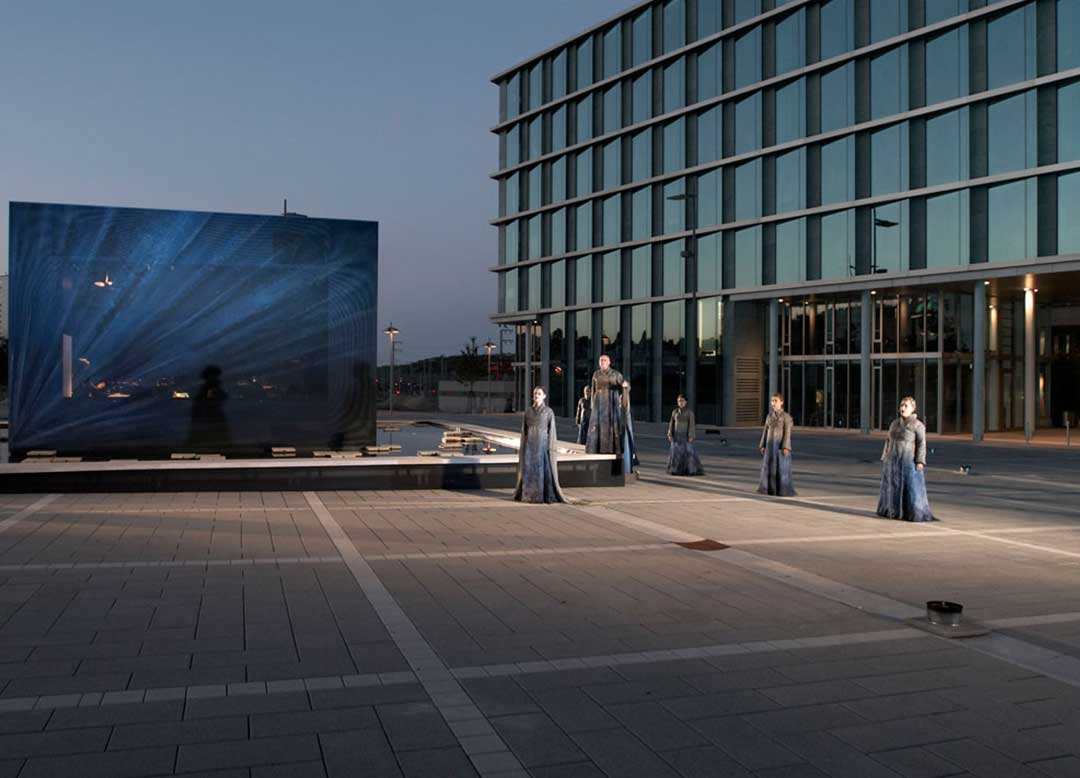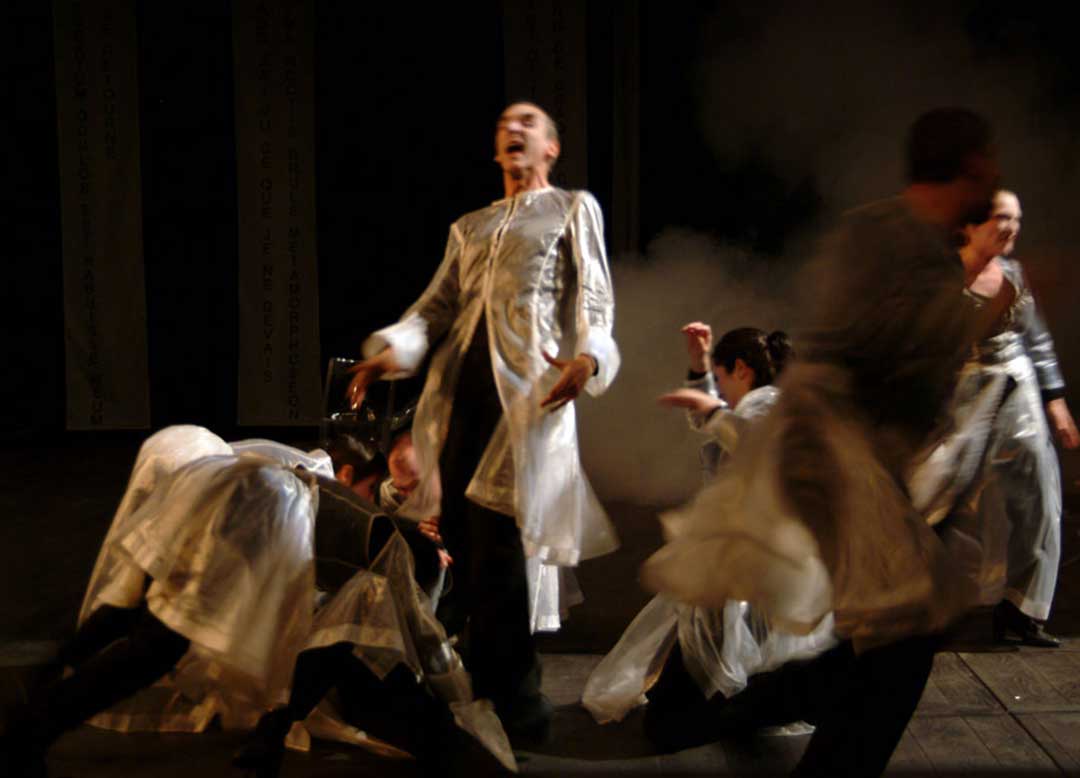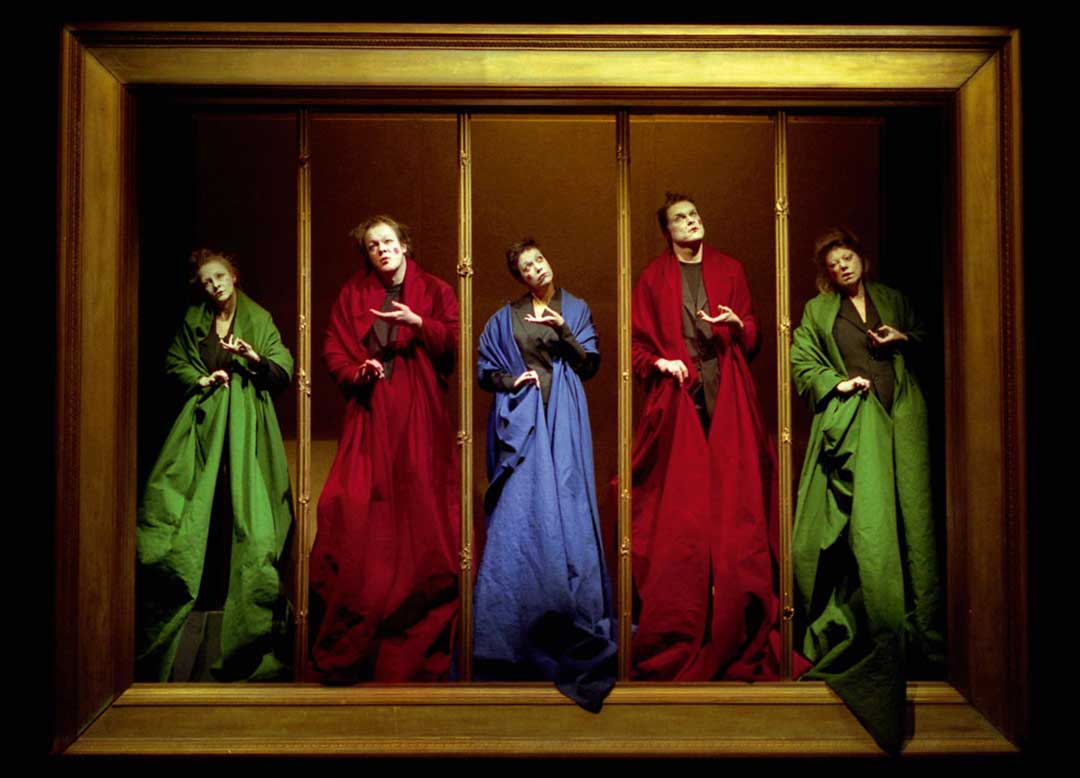A la recherche du corps wagnérien
Exploration of Richard Wagner’s Ring Cycle
A la recherche du corps wagnérien
Exploration of Richard Wagner’s Ring Cycle
A monumental four-part cycle, the Ring des Nibelungen was the successful outcome of Wagner’s quest for a total work of art. Based on the model from classical tragedy which allied theatre, poetry, music and dance in perfect unity, this epic inspired by Norse and ancient mythologies represents a landmark in the history of the performing arts. Wagner’s work serves here a vast field of experimentation.
- Danse macabre au Walhalla, based on The Rhinegold
At the origin of a world where gods, humans and underground creatures mingle, The Rhinegold is a vast prologue that, like the shape of the ring, straightaway heralds the end. The variety of characters, the versification of the libretto and the numerous scene changes and other staging indications served as the initial field of research. Measuring the impact of the music and reinventing a language, incarnating hybrid beings – sprites, giants or gnomes – and situating the place of the action in mud, salt or ice were all ways of exploring the nature of the famous Gesamtkunstwerk.
- Paradis guerrier, based on The Valkyrie
The first day of the Ring and The Valkyrie is all about conflict and attraction. Confronting Wotan, the god of gods, his daughter Brünnhilde, surrounded by Valkyries, affronts his ancestral authority when she saves the incestuous twins Siegmund and Sieglinde. These interactions lead to the two clans confronting each other on a huge chessboard. The art of war, the exploration of religious ritual, speed dating by way of an amorous encounter and a colloquium of psychoanalysts on incest form the basis for the improvisations.
- Seul celui qui jamais ne connut la peur, based on Siegfried
This second day of The Ring charts the emancipation and breathtaking rise of Siegfried, the fiery, foolhardy and insolent hero. Using musical interludes coming directly from the score, the show explores the different facets of this fearless valiant knight. The meeting of the Wagnerian circle and its fanatics, the encounter with the dragon, a reality show looking for the perfect Siegfried, the visit to the cave of desire, the creation of a race without fault or vice, or a workshop on fear for love are all stages in an exploration that ends with the awakening of the virgin Brünnhilde. “Who is the hero who awakened me?”
- Ma lance le frappera dans le dos, based on Twilight of the Gods
A Schopenhauerian, fatal vision, Twilight of the Gods recounts the annihilation by fire of the world of gods and heros, undone by the quest for gold. In the image of this collapse, this last part of the research revolved around a decadent and perverse micro-society. Various characters encounter one another, losing themselves in excess and immoderation. Embellished by quotations from Nietzsche and Schopenhauer, the action is given emphasis by a chorus taking up Wagner’s libretto. The drama concludes with the famous Funeral March. The manhunt turns into a cruel corrida with the hero being put to death before a sniggering crowd.
Credits
Conception and direction: Ingrid von Wantoch Rekowski
Dramaturgy: Stéphane Roussel
Assistant: Edith Bertholet
Workshop 1
Performers (Conservatoire Royal de Mons): Grégory Blaimont, Céline Delbecq, Morgiane El Boubsi, Grégoire Fasbender, Simon Fiasse, Agnieszka Ladomirska, Magali Pingault, Anne Schmitz, Shérine Seyad, Réal Siellez, Valentine Syfer
Set designers (La Cambre): Cécile Balate, Olivia Barisano, Eglantine Chaumont, Maude Ledoux, Valentin Périlleux, Pauline Picry, Kornelia Piskorek
Associate teachers & participants: Jean-Phillipe Collard, Jean-Claude De Bemels, Candy Saulnier, Isabelle Dumont, Simon Thorne, Ivo Kuyl, Roland Van der Hoeven
Workshop 2
Performers: Selma Alaoui, Angelo Dello Spedale Catalano, Sophie Descamps, Frédéric Ghesquière, Rama Grinberg, Ludmilla Klejniak, Cédric Lenoir, Nicolas Luçon, Clémentine Marmey, Aurelio Mergola, Laurent Michelli, Naïma Triboulet, Bénédicte Wenders, Gaëtan WendersHanna Bardos, Dieter Bossu, Chiara De Palo, Agnès Guignard, Cécile Leburton, Sylvie Merck, Sandhya Nagaraja, Isabelle Roeland, Ariane Rousseau, Amanda Smallbone, Silvana Suarez, Barbara Sylvain, Shahla Tarrant, Catherine Travelletti, Carole Trevoux, Françoise Vanhecke, Diane Weller
Workshop 3
Performers (INSAS): Guillaume Alexandre, Helena Coppejans, Gabriel Da Costa, Claire Leyat, Sophie Maillard, Simon Moers, Eléna Perez, Estelle Petit, Catherine Picalausa, Anne-Céline Souma, Aurélien Van Trimpont, Lise Wittamer
Stage managers, Assistants (INSAS): Caroline Bastin, Quentin Boillat, Pauline Chevallier, Julien Courroye, Astrid De Man, Elsa Martinez, Fabienne Muet, Léa Schwebel, Lucile Urbani
Visiting teachers : Michel Boermans, Christine Grégoire, Manon Ledune, Nicole Moris, Jean-Marie Piemme, Alain Prévot assisted by Bernadette Blanchy, David Naud
Workshop 4
Performers (Manufacture de Lausanne): Melanie Bauer, Liza Baumann, Emilie Bobillot, Alain Borek, Ludovic Chazaud, Baptiste Coustenoble, Marion Duval, Baptiste Gillieron, Stella Giuliani, Aurore Jecker, Aline Papin, Camille Mermet, Ludovic Payet, Lucie Rausis, Lola Riccaboni, Cédric Simon
Lecturers: Laurent Guido, Alain Perroux
Production: Lucilia Caesar, Théâtre National (Brussels), Koninklijke Vlaamse Schouwburg (Brussels), Conservatoire Royal de Mons, École Nationale Supérieure de la Cambre (Brussels), Institut National Supérieur des Arts du Spectacle (Brussels), Manufacture Haute École de théâtre de Suisse Romande (Lausanne), Festival Brigittines (Brussels).
Supported by: Fédération Wallonie-Bruxelles (Direction du Théâtre)
Press
Connaissez-vous Wagner ? Si oui, précipitez-vous au théâtre National pour y découvrir Seul celui qui n’a jamais connu la peur. Si non, précipitez-vous au Théâtre National pour y découvrir Seul celui qui n’a jamais connu la peur. C’est drôle, tonique, plein d’idées et d’intelligence. On ne s’ennuie pas une seconde, on s’interroge, on rit, on est constamment surpris et on finit même par comprendre cette histoire tordue de nains, de héros, de princesse, de dieux énervés, de trésor caché, de dragon et d’épée mythique.
(Scènes, Jean-Marie Wynants, 30/05/08)
Quatre ateliers pour plonger dans les méandres de la tétralogie wagnérienne et scruter la tension entre folie et génie : réinvention d’un langage archaïque (l’or du Rhin), dérision de l’art de la guerre (la Walkyrie), délire et peur de l’amour (Siegfried), pulsion de mort (le crépuscule des dieux). La metteure en scène pédagogue n’a pas craint d’aborder ce monde où « l’univers s’y confronte au particulier, le sublime au pathologique, l’héroïque au grotesque, le mythique à l’insignifiant. La pensée y est toujours paradoxale, dangereuse, à la fois fragile et puissante. Le génie porte ici au paroxysme les pulsions les plus obscures et une idéologie tragique et ambiguë de la violence.
(Alternatives Théâtrales, Bernard Debroux, 2018)





Gallery
Seulcelui ©EricLegrand

A la recherche du corps wagnérien – Seulcelui ©EricLegrand

A la recherche du corps wagnérien – Seulcelui ©EricLegrand

A la recherche du corps wagnérien – Seulcelui ©EricLegrand

A la recherche du corps wagnérien – Seulcelui ©EricLegrand

A la recherche du corps wagnérien – Seulcelui ©EricLegrand

A la recherche du corps wagnérien – Seulcelui ©EricLegrand

A la recherche du corps wagnérien – Seulcelui ©EricLegrand

A la recherche du corps wagnérien – Seulcelui ©EricLegrand

A la recherche du corps wagnérien – Seulcelui ©EricLegrand

A la recherche du corps wagnérien – Seulcelui ©EricLegrand

A la recherche du corps wagnérien – Seulcelui ©EricLegrand

A la recherche du corps wagnérien – Seulcelui ©EricLegrand

A la recherche du corps wagnérien – Seulcelui ©EricLegrand

A la recherche du corps wagnérien – Seulcelui ©EricLegrand

A la recherche du corps wagnérien – Seulcelui ©EricLegrand
Paradis Guerrier

A la recherche du corps wagnérien – Paradis Guerrier

A la recherche du corps wagnérien – Paradis Guerrier

A la recherche du corps wagnérien – Paradis Guerrier

A la recherche du corps wagnérien – Paradis Guerrier

A la recherche du corps wagnérien – Paradis Guerrier
Malance

A la recherche du corps wagnérien – Malance

A la recherche du corps wagnérien – Malance

A la recherche du corps wagnérien – Malance

A la recherche du corps wagnérien – Malance
